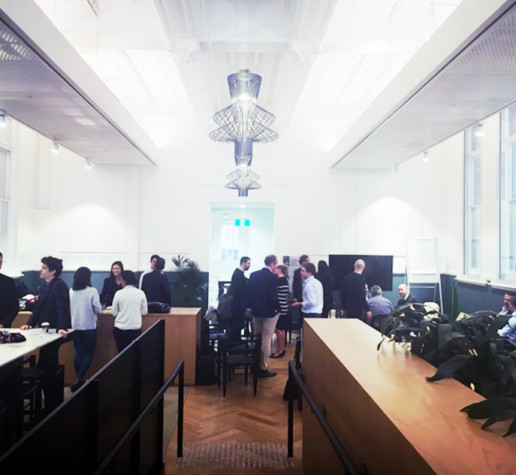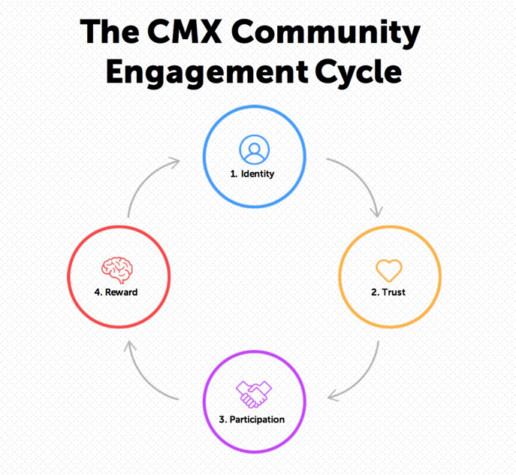I first became aware of Reinventure when it made its inaugural investment as a fund into peer-to-peer lending marketplace SocietyOne in early 2014. Having spent the previous four years researching the emerging collaborative economy, tracking the growth of peer-to-peer startups like SocietyOne all around the world, I was excited to see the start of a new tech, and more specifically fintech, boom hitting Australian shores.
Around the same time, I noticed the community-centric approach of collaborative economy startups like Airbnb, Skillshare, Lyft and Kickstarter was having a flow-on effect to the venture capital firms investing in them. The most highly respected US VCs had recognised they could create additional value for their portfolio companies by connecting them with each other. Through networking events, educational opportunities and shared services, the portfolio community strategy was clearly becoming a popular way to develop competitive advantage as a fund.
For Reinventure, with deep roots in the disruptive FinTech space and a relationship with Westpac Banking Corporation as its largest limited partner, building a portfolio community seemed like a natural next step. I approached the fund’s partners, Simon and Danny, when the fund’s investment portfolio was seven ventures strong to pitch the idea of building a venture community, and they were immediately receptive. They had a strong community track record already, having seeded and incubated Stone & Chalk, Australia’s largest FinTech coworking hub, to grow the local ecosystem. Since coming on board one year ago as the first Head of Community for an Australian venture capital firm, we have welcomed four additional ventures to the Reinventure Family, announced our second $50m fund and supported the formalization of the broader Australian FinTech community. As I reflect on the evolution of our community strategy over this past 12 months, there are a few key insights that will help us set the agenda for our next chapter.

Reinventure Founders Day August 2016
It’s never too early to establish community
While many of my US peers stepped into the community role with ready-made portfolios of more than 50 (sometimes even 100!) ventures, Reinventure’s relative youth as a fund has been an advantage in laying community foundations. Even within a portfolio of seven companies, there was variation in stage, size and needs, so being able to build relationships quickly with our founders helped to identify common opportunities. At a most basic level, this has been about increasing ease of connection between founders, illuminating mutual areas of interest and opportunity, and developing shared service initiatives that have maximum impact across all companies.
Another reason for establishing a sense of community early is that every new venture we bring on board is immediately welcomed into an active and supportive environment. This results in much higher engagement from our newer family members — for me, an early indicator of success. Instead of retrofitting behaviours and having to adjust the nature of the investor-investee relationship, new ventures are inducted into the community so it more naturally feels like an extension of their team. In fact, the growing reputation of our venture community is already being acknowledged as a real value-add for potential investee companies as we finalise negotiations.
Having said this, there can be downsides to being early off the mark given any thriving community requires critical mass, as my VC Community colleagues have observed. In the early days, a lot of facilitation and ‘manual’ involvement has been required to stoke the community fire and gather momentum. A visible example of this has been our Reinventure Family Slack network, launched in September last year for our Founders and core team across key areas such as product, HR and marketing. It took eight months to reach a volume of 2,000 messages in the network, a number Slack has determined to be its magic tipping point. Over next three months, that figure more than doubled, as the network becomes an increasingly valuable portfolio peer support tool.
Community is a long game — lay strong foundations
Community is not one-size-fits-all, nor can the game plan be rolled out all at once. It is an iterative process of constantly creating, testing, learning and optimising to ensure it grows in the right direction. Understanding this can be the key to understanding the ‘health’ of your community, and knowing where to head next with your strategy and initiatives. The work of the CMX Hub team, and in particular their Community Engagement Cycle, has helped me create a framework to understand where my community is at.

CMX Hub’s Community Engagement Cycle
Creating the necessary foundations for our portfolio community has first been about creating a shared sense of identity among our portfolio founders and key team members. Leveraging points of similarity, such as a shared interest in the success of the Australian FinTech ecosystem and our strategic relationship with Westpac, has created a strong starting point to better connect an otherwise diverse group, which leads to the next stage in the journey.
Trust is without a doubt the most critical point in a community’s evolution, a sword that most would in fact live or die by. While our online community lay the foundations for this, it has been our series of offline events, such as Founders Retreats and function-specific meetups, that have really supercharged trust within the group. Founders and team members start to consult each other directly on key issues and topics to canvas opinions and seek recommendations. As the power of peer support becomes increasingly evident, this trust in each other and in the community as a whole drives increased and proactive participation amongst its members.
As our portfolio community matures, we are doubling down on creating opportunities for participation and understanding what incentives help to reward active community behaviour to drive even greater engagement across the board.
Data, data, data — measure your community value
Any good strategy starts with some key objectives in mind, and community strategy is no different. For Reinventure, our community objectives include helping our ventures succeed by matching them with the right knowledge, resources and networks; strengthening engagement between our ventures and Westpac; and actively contributing to the development of the Australian FinTech ecosystem. While there are overall indicators as to how we are tracking against those objectives, the challenge is being able to gather more quantitative data to measure progress.
This is made all the more difficult when metrics like ‘engagement’ are difficult to evaluate numerically or in a binary way, and other raw data indicators like volume of Slack messages can feel like a long bow, or very small pieces of a large puzzle. As a starting point, we measure everything we possibly can in order to create some baseline metrics, and understand where the gaps are. In all honesty, it has been a challenge to optimize the data collection process across our ventures without creating unwanted layers of bureaucracy and additional reporting. It’s something we continue to work on, and in the absence of hard numbers we continue to seek anecdotal feedback to complete the picture. Regardless, being data-driven about community strategy is critical to understanding which initiatives add most value and where additional support or resources should be directed. Just like investing, community is equal parts art and science.
With the launch of our second fund, our portfolio community is likely to double over the next year or so. Alongside this, the Australian FinTech community continues to go from strength to strength, and we are proud to have a seat at the table in making ours a global ecosystem of note. I am excited to see the Reinventure Family grow as we welcome new entrepreneurs into the fold, continue to learn how we can add the most value as a strategic investor in tandem with Westpac, and help our entrepreneurs leverage the best of each other in the process. Despite the incredible traction and growth over the last year, I am certain we are just at the early stages of a much larger journey together.
PS The single most beneficial thing I have done to strengthen my community strategy capability is get involved with CMX Hub, and in particular their Fundamentals of Community Strategy course. I’d keep that a secret, except I’d rather help grow the community of community professionals so we can all support each other too 🙂
